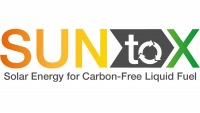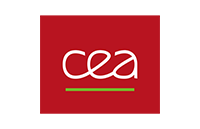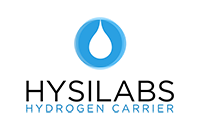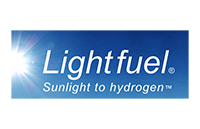SUN-TO-X IN A NUTSHELL
The Sun-To-X project focuses on using solar energy to produce a carbon-free, non-toxic, energy-dense, liquid fuel -Hydrosil, with very good long-term stability, which is applicable in the transport and energy sectors. This unique carbon-free fuel can store large amounts of hydrogen, can be regenerated after use, does not use rare materials and has a very low impact on environment.
The Sun-To-X consortium proposes the energy storage system described in the figure below, where Hydrosil is synthesised through the use of solar energy, ambient water (captured from humidity and rain) and a rechargeable silica liquid. In addition, the consortium will demonstrate the use of the Hydrosil molecule in waste plastic valorisation towards a circular economy.
STEPS
- STEP 1: We will use membrane photoelectrode assemblies that can operate with solar energy using only ambient humidity as the water supply.
- STEP 2: We will develop reactors for the renewable production of Hydrosil for the first time.
- STEP 3: We will demonstrate a completely decarbonised energy cycle with liquid fuels to transition to a circular economy.
STRUCTURE

This work package is led by the Helmholtz-Zentrum Berlin (HZB) and its main objective is to fabricate porous photoanode assemblies.

This work package is led by the Ecole Polytechnique Fédérale de Lausanne (EPFL) and aims to develop a photocathode assembly.

Work package 3 is led by the Dutch Institute for Fundamental Energy Research NWO-I and focuses on developing the next generation of MPEA-based tandem cells that will produce solar hydrogen using humidity of ambient air as water feedstock.

This work package is led by Hysilabs and its main objective is to design a charging unit that will perform the storage of hydrogen into a liquid hydrogen carrier HydroSil.

Work package 5, led by Engie, will design, commission and operate a device that integrates the PEC system and the Hydrosil synthesis reactor developed in the project.

Work package 6 is led by LGI and will focus on creating the conditions for a successful market uptake of the technology developed in the project. This work package will also make sure that the results obtained are disseminated and used after the project ends.

Work package 7, led by Toyota Motor Europe, will coordinate the project from a technical, scientific, legal, financial and administrative point of view.

This work package is led by LGI and its main goal is to communicate and disseminate the activities and results generated in Sun-To-X to target audiences and key stakeholders.
The project, coordinated by Toyota Motor Europe, gathers 9 partners from 5 different countries.
To find out more about Sun-To-X partners, visit our project partners page.












